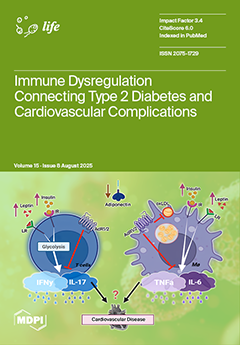Encephalitis is a potentially life-threatening condition with long-term neurological sequelae. However, data on early clinical, demographic, and diagnostic predictors of functional outcomes remain limited. We performed a retrospective monocentric study including 98 patients diagnosed with infectious encephalitis of various etiologies treated in the
[...] Read more.
Encephalitis is a potentially life-threatening condition with long-term neurological sequelae. However, data on early clinical, demographic, and diagnostic predictors of functional outcomes remain limited. We performed a retrospective monocentric study including 98 patients diagnosed with infectious encephalitis of various etiologies treated in the University Hospital Ulm between January 2014 and December 2024. Ordinal logistic regression models were applied to evaluate associations between admission characteristics and functional outcome at discharge, as measured by the modified Rankin Scale. Three multivariate models incorporating clinical, demographic, and MRI/EEG variables explained up to 53% of the variance in mRS at discharge (
p < 0.001), outperforming models based solely on CSF parameters. Key predictors of poor functional outcome included ‘altered consciousness’ (OR 7.08,
p < 0.001), higher ‘mRS at admission’ (OR 0.03–0.07 across categories,
p < 0.001), ‘focal/generalized EEG slowing’ (OR 9.97,
p < 0.001), ‘epileptiform EEG activity’ (OR 17.49,
p < 0.001), ‘MRI: myelitis’ (OR 16.44,
p = 0.004), and ‘intrathecal IgM synthesis’ (OR 8.93,
p = 0.018). Conversely, ‘longer hospitalization’ (OR 0.13–0.17 for different intervals,
p < 0.006) and ‘intrathecal IgG synthesis’ (OR 0.05,
p = 0.03) were associated with more favorable outcomes. Despite the single-center and retrospective aspects of this study, our findings underscore a multifactorial pattern of outcome determinants in infectious encephalitis, highlighting the prognostic relevance of initial neurological status, electrophysiological abnormalities, and neuroimaging features.
Full article






